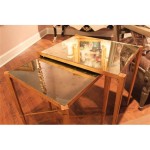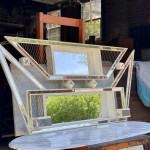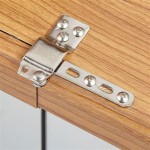Mirroring One Apple TV to Another Device: A Comprehensive Guide
The ability to mirror content from one device to another offers a flexible and convenient way to share media, presentations, and other visual information. While Apple's AirPlay technology facilitates effortless screen mirroring from iPhones, iPads, and Macs to an Apple TV, directly mirroring the output of one Apple TV to another device, particularly another Apple TV or a non-Apple device, presents a different set of considerations and often requires workarounds. This article explores the possibilities and limitations of mirroring one Apple TV's display to another device, detailing available methods and necessary steps.
The primary function of AirPlay, as designed by Apple, is to stream content from source devices like iPhones, iPads, and Macs to a receiver device capable of AirPlay, most notably an Apple TV. While direct mirroring from one Apple TV to another Apple TV is not a natively supported feature, various software and hardware solutions can achieve similar results, albeit with varying degrees of functionality and performance. Understanding these limitations and available alternatives is crucial for users seeking to replicate the screen of one Apple TV on another device.
Understanding AirPlay and Its Limitations
AirPlay is a proprietary wireless communication protocol developed by Apple that enables audio and video streaming between compatible devices. It relies on a local Wi-Fi network to transmit data, ensuring a relatively stable and high-quality connection for media playback. When mirroring an iPhone or iPad to an Apple TV, the mobile device sends a real-time stream of its screen content to the Apple TV, which then displays it on the connected television or monitor. This process works seamlessly within the Apple ecosystem, providing a user-friendly experience.
However, the design of AirPlay prioritizes the source-to-receiver model. An Apple TV is primarily designed as a receiver of AirPlay streams, not as a transmitter. Consequently, directly mirroring the screen output of one Apple TV to another device using AirPlay alone is not possible. The Apple TV does not have the inherent capability to act as an AirPlay source and transmit its screen content to another receiving device.
This limitation stems from the architectural design of the Apple ecosystem and the intended use cases for AirPlay. Apple envisions Apple TV as an endpoint for consuming content streamed from other devices or accessed directly through its built-in apps. While this design provides a streamlined and efficient experience for its intended purpose, it restricts the flexibility of mirroring one Apple TV's output to another device without resorting to alternative methods.
Workarounds and Alternative Solutions
Despite the limitations of AirPlay for direct Apple TV-to-Apple TV mirroring, several workarounds and alternative solutions exist that can potentially achieve a similar outcome. These solutions typically involve using third-party software or hardware to capture and re-transmit the Apple TV's screen content. The effectiveness and practicality of these methods can vary depending on the specific use case, network conditions, and the desired level of performance.
One approach involves using a screen recording application in conjunction with screen sharing software. The first Apple TV's display is captured using an external HDMI capture device connected to a computer. The computer then runs screen sharing software, allowing other devices, including another Apple TV, to view the captured screen. This method introduces latency and requires additional hardware and software setup, but it offers a viable solution for mirroring the display content.
Another potential solution is to utilize a mirroring application that supports screen sharing across different platforms. Specifically, mirroring applications that can receive content from one device and transmit it to another, regardless of their operating system, can be employed. It's necessary to evaluate the compatibility of these applications with the Apple TV operating system and the potential for lag or reduced image quality.
Furthermore, specific hardware solutions, such as HDMI splitters and wireless HDMI transmitters, can be used to duplicate the video output of the first Apple TV to multiple displays. An HDMI splitter sends the same video signal to multiple displays simultaneously. A wireless HDMI transmitter sends the video signal wirelessly to a receiver connected to the secondary display. While these options don’t truly mirror the second Apple TV's interface, they duplicate the primary device's video output.
Step-by-Step Guide: Using an HDMI Capture Device and Screen Sharing Software
This method utilizes readily available hardware and software to mirror the display of one Apple TV to another device. While it involves a more intricate setup, it provides a reliable way to replicate the screen content, albeit with potential latency issues.
Step 1: Hardware Acquisition: The initial step involves acquiring an HDMI capture device. This device captures the video and audio output from the Apple TV via an HDMI connection. Popular options include USB-based capture cards from Elgato, AverMedia, and similar brands. The selection of a capture device should be based on resolution support (at least 1080p or 4K for optimal quality), compatibility with the user's computer operating system (Windows or macOS), and budget considerations.
Step 2: Software Installation: The next step is to install the necessary software on the computer. This typically includes the capture card's driver software and a screen sharing application. Examples of screen sharing applications include OBS Studio, Zoom, Microsoft Teams, or dedicated screen sharing software like TeamViewer. OBS Studio is a free and open-source option that offers extensive customization and streaming capabilities. Other screen-sharing software options may provide simpler interfaces but could come with subscription fees or limitations.
Step 3: Connection and Configuration: Connect the HDMI output of the first Apple TV to the input of the HDMI capture device. Connect the capture device to the computer via USB. Configure the screen sharing software to capture the video feed from the HDMI capture device. This typically involves selecting the capture device as the video source within the software's settings. Ensure the audio input is correctly selected as well.
Step 4: Screen Sharing Setup: Initiate the screen sharing session from the computer. Depending on the software used, this may involve generating a shareable link or requiring the receiving device (the second Apple TV) to install a client application and connect to the session. The second Apple TV can then access the screen sharing session through its web browser or the dedicated application, if available.
Step 5: Optimization and Troubleshooting: Once the screen sharing session is active, monitor the performance and adjust settings as needed. Potential issues include latency (lag between the source and receiver), audio synchronization problems, and image quality degradation. Adjusting the video resolution, frame rate, and network bandwidth settings within the screen sharing software can help mitigate these problems. Ensure that the computer has sufficient processing power and network connectivity for optimal performance.
It's important to acknowledge the potential for latency using this method. The encoding, transmission, and decoding process introduced by the capture device and screen sharing software inevitably adds a delay, which may be noticeable for real-time applications such as gaming. For static content or presentations, the lag may be less of a concern.
This approach is not a direct mirroring solution but rather a screen capture and re-transmission method. This distinction highlights the trade-offs between convenience and functionality. While a direct mirroring feature would be ideal, this approach offers a viable alternative for users seeking to replicate the display content of one Apple TV on another device.
Ultimately, the decision to use this method depends on the specific requirements of the user, the available resources, and the tolerance for latency. For users who prioritize absolute real-time performance, other solutions, such as hardware-based HDMI splitters or wireless HDMI transmitters, may be more suitable. However, for users seeking a software-based solution with flexibility and customization options, this method offers a feasible alternative.

How To Screen Mirror Multiple Devices Apple Tv Simultaneously

How To Airplay A Tv Zdnet

Use Airplay To Stream Or Mirror The Screen Of Your Iphone Ipad Apple Support

Use Airplay To Stream Or Mirror The Screen Of Your Iphone Ipad Apple Support

Switch It Up How To Stream Mirror Content Your Apple Tv With Airplay Pcmag

Use Airplay To Stream Or Mirror The Screen Of Your Iphone Ipad Apple Support

11 Screen Mirroring Devices For Presenting Wirelessly Computerworld

How To Use Apple Airplay Mirror Your Iphone Mac Screen On Tv Roku And More Cnet

How To Use Airplay Apple Tv Without Wi Fi Full Guide

Wirelessly Stream S And Photos To Apple Tv Or A Smart From Iphone Support








